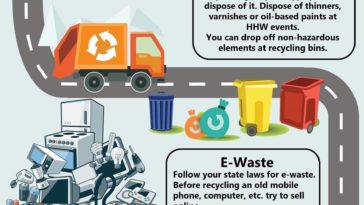Practical Advice For Waste Control While Restoring Your Home
Practical Advice For Waste Control While Restoring Your Home
Blog Article
Author-Ebsen Robertson
When embarking on a home improvement, waste monitoring may not be the first thing on your mind, however it's an essential facet of the procedure. By applying a few straightforward methods, you can considerably reduce the ecological effect of your job. From wise decluttering methods to innovative reusing solutions, these quick pointers will not just boost the performance of your restoration yet additionally add to a more lasting end result.
Pre-Renovation Decluttering
Before diving right into your home renovation job, decluttering your space is a vital step to make certain a smoother and much more orderly process. Beginning by analyzing each space and establishing what products are necessary and what can be disposed of or contributed. Be fierce in your decluttering efforts; if you haven't made use of a thing in over a year, it may be time to let it go.
Sort things right into categories such as keep, contribute, reuse, or throw out. Purchase storage space solutions like bins or shelves to aid arrange the things you choose to keep. This won't just declutter your area yet additionally make it less complicated to locate things throughout and after the restoration.
Decluttering before the renovation will not only streamline the procedure yet also save you time and money. You'll have a clearer vision of what requires to be done and won't be overwhelmed by unneeded products.
As soon as you have actually decluttered, you can move on with your remodelling project with a fresh and well organized area.
Effective Waste Arranging
To guarantee a smooth and eco conscious home restoration process, reliable waste sorting is vital. As you start your renovation job, established assigned sorting areas for different types of waste.
Placing different bins or containers for recyclables, unsafe materials, and basic waste will certainly improve the disposal process and make it simpler to divert recyclable materials from winding up in land fills.
Tag each arranging location plainly to avoid complication and guarantee that everybody involved in the restoration understands where each type of waste should go. This basic action can assist prevent blending of products that can pollute recyclables or create security threats during disposal.
Recycling and Upcycling Methods
Reliable waste arranging collections the structure for a successful home renovation task. When it involves managing waste throughout your improvement, recycling and upcycling techniques play a vital function in lowering landfill waste and maximizing the potential of your products.
Start by designating separate containers for various types of recyclables like glass, plastic, and paper. Contact your local recycling facilities to ensure you're complying with the proper standards for disposal.
Take into consideration upcycling things like old furnishings, doors, or cabinets instead of tossing them away. With a fresh layer of paint or some creative modifications, you can provide these items a brand-new life in your refurbished room. visit their website reduces waste yet additionally adds a special touch to your home design.
Seek donation centers or organizations that accept multiple-use building products. By donating things like light fixtures, closets, or tiles, you can aid others while decluttering your space. Remember, a little effort in reusing and upcycling can go a long way in making your home improvement project more sustainable and environmentally friendly.
Final thought
To conclude, by following the quick ideas for taking care of waste throughout a home remodelling, you can make the process a lot more reliable and eco-friendly. Decluttering prior to beginning the restoration, arranging waste right into assigned containers, and thinking about recycling or upcycling options can help minimize the quantity of waste mosting likely to land fills. With a little extra effort, you can make a huge impact on the sustainability of your project.
